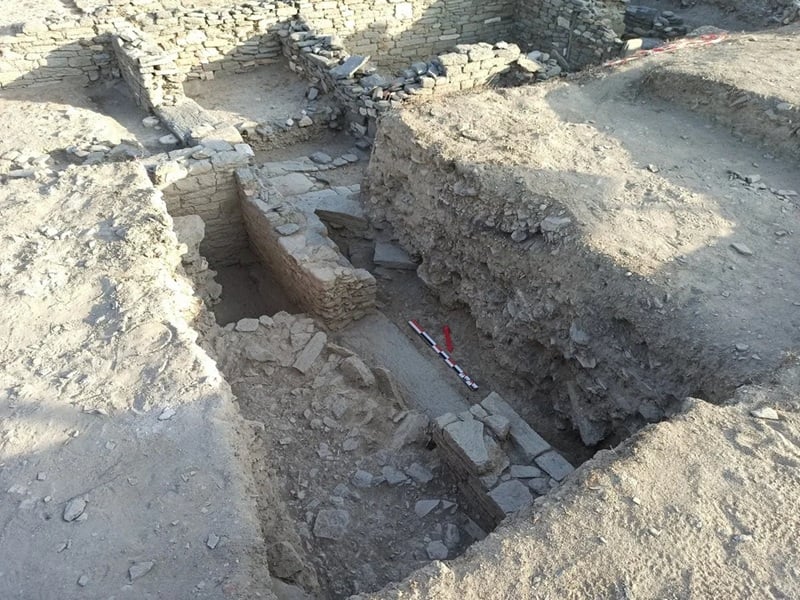

Greece’s Ministry of Culture announced on Wednesday that an ancient sculpture workshop was discovered during excavations on the island of Paros.
Originally excavated in the mid-1980s, the site revealed three building units, along with deposits of marble debris and numerous semi-finished sculptures—early signs of a Hellenistic-era sculpture workshop.

Archaeological work resumed in 2008, with systematic excavation beginning in 2013. Recent discoveries include additional architectural remains, some built atop earlier structures, confirming the area’s continuous use over time. Earlier phases date from the late 5th to the 4th century BC, with Classical-era ceramic finds—mainly tableware—pointing to residential use.
In the late 3rd to early 2nd century BC, the area underwent a major reorganization. The layout of the newly uncovered buildings suggests the continued residential function during the Hellenistic period. One room, identified as an andron (a formal dining room for men), features a pebbled floor and wall decorations imitating marble panels—hallmarks of elite domestic architecture.
However, the discovery of marble debris layers in the courtyard, numerous unfinished sculptures, clay molds, seals, pigments, and metal slag confirms that the site also served as a sculpture and artisan workshop in a later period.

This year’s excavation by the Cyclades Archaeological Society uncovered more rooms within the complex, with walls preserved to an impressive height. Among the standout finds are semi-finished marble statues—many depicting Aphrodite—alongside clay female heads, molds, seals, and a large volume of pottery.
Paros was extremely famous in antiquity for its high-quality marble, known as Parian marble. It was one of the most prized marbles of the ancient world.
The marble quarries of Paros, where the famous lychnite was mined, were the source of many of ancient Greece’s sculptural masterpieces. Masterpieces by artists like Praxiteles and Phidias were crafted from Parian marble. The Venus de Milo (Aphrodite of Milos), housed in the Louvre, is believed to be carved from Parian marble.
Lychnite is a snow-white, fine-grained marble with a unique permeability to light, which gave an inimitable plasticity to sculptures and was therefore used only in statuary. This had enchanted the ancient artists.
Along with marble from Naxos and Penteli Mountain, Parian marble was widely exported across the Mediterranean, especially during the Archaic and Classical periods.
The ancient quarries were located near Marathi, near Parikia. What’s particularly interesting is that some of the finest marble was extracted from underground galleries, known as the “Lychnites” (from lychnos, meaning lamp), because quarrying was done by lamplight deep inside the mountains.
Related: Where Greek Masterpieces Began: Efforts to Preserve Paros’ Famed Marble Quarries
